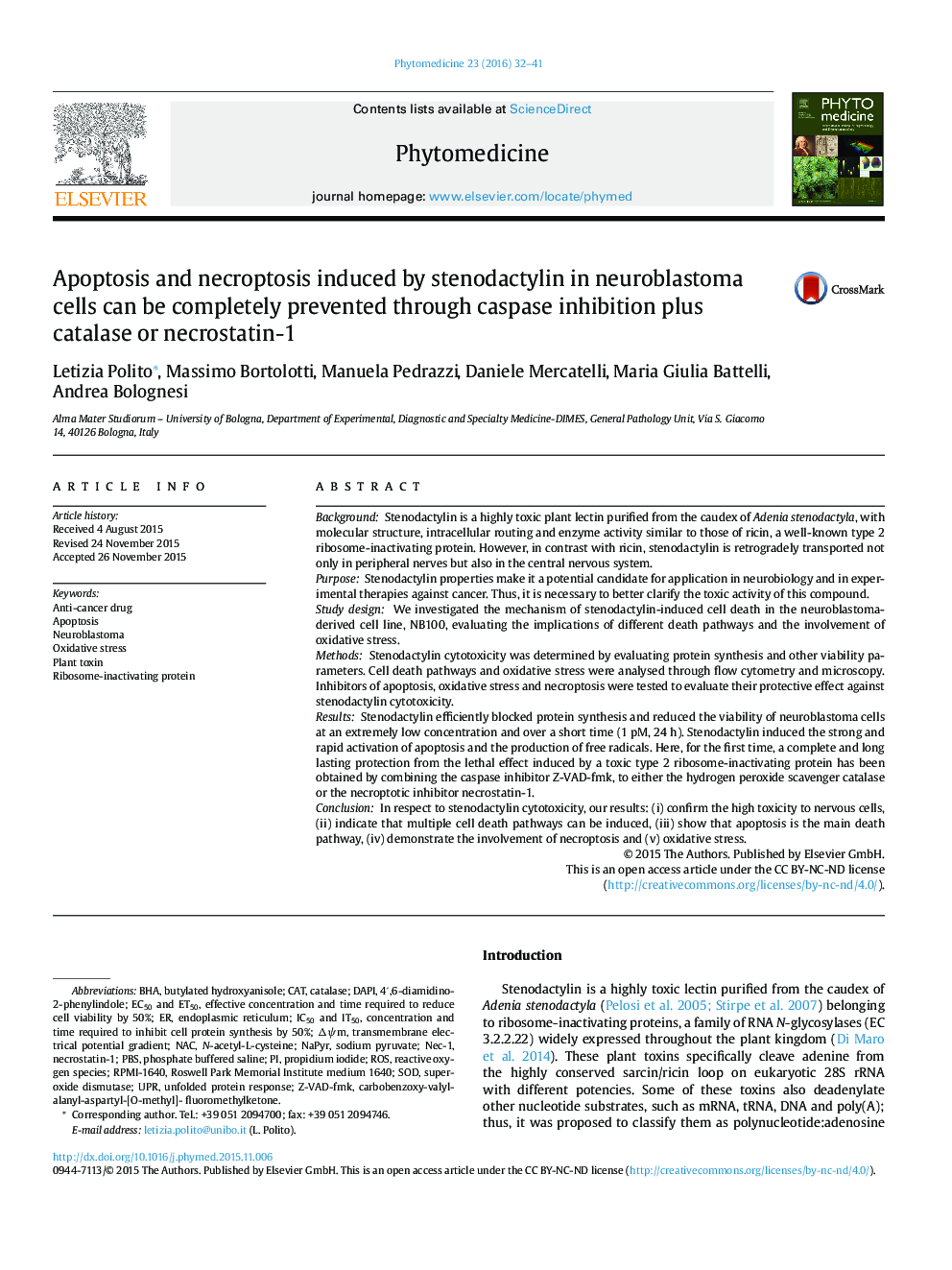| کد مقاله | کد نشریه | سال انتشار | مقاله انگلیسی | نسخه تمام متن |
|---|---|---|---|---|
| 5816287 | 1116120 | 2016 | 10 صفحه PDF | دانلود رایگان |
BackgroundStenodactylin is a highly toxic plant lectin purified from the caudex of Adenia stenodactyla, with molecular structure, intracellular routing and enzyme activity similar to those of ricin, a well-known type 2 ribosome-inactivating protein. However, in contrast with ricin, stenodactylin is retrogradely transported not only in peripheral nerves but also in the central nervous system.PurposeStenodactylin properties make it a potential candidate for application in neurobiology and in experimental therapies against cancer. Thus, it is necessary to better clarify the toxic activity of this compound.Study designWe investigated the mechanism of stenodactylin-induced cell death in the neuroblastoma-derived cell line, NB100, evaluating the implications of different death pathways and the involvement of oxidative stress.MethodsStenodactylin cytotoxicity was determined by evaluating protein synthesis and other viability parameters. Cell death pathways and oxidative stress were analysed through flow cytometry and microscopy. Inhibitors of apoptosis, oxidative stress and necroptosis were tested to evaluate their protective effect against stenodactylin cytotoxicity.ResultsStenodactylin efficiently blocked protein synthesis and reduced the viability of neuroblastoma cells at an extremely low concentration and over a short time (1Â pM, 24Â h). Stenodactylin induced the strong and rapid activation of apoptosis and the production of free radicals. Here, for the first time, a complete and long lasting protection from the lethal effect induced by a toxic type 2 ribosome-inactivating protein has been obtained by combining the caspase inhibitor Z-VAD-fmk, to either the hydrogen peroxide scavenger catalase or the necroptotic inhibitor necrostatin-1.ConclusionIn respect to stenodactylin cytotoxicity, our results: (i) confirm the high toxicity to nervous cells, (ii) indicate that multiple cell death pathways can be induced, (iii) show that apoptosis is the main death pathway, (iv) demonstrate the involvement of necroptosis and (v) oxidative stress.
169
Journal: Phytomedicine - Volume 23, Issue 1, 15 January 2016, Pages 32-41
